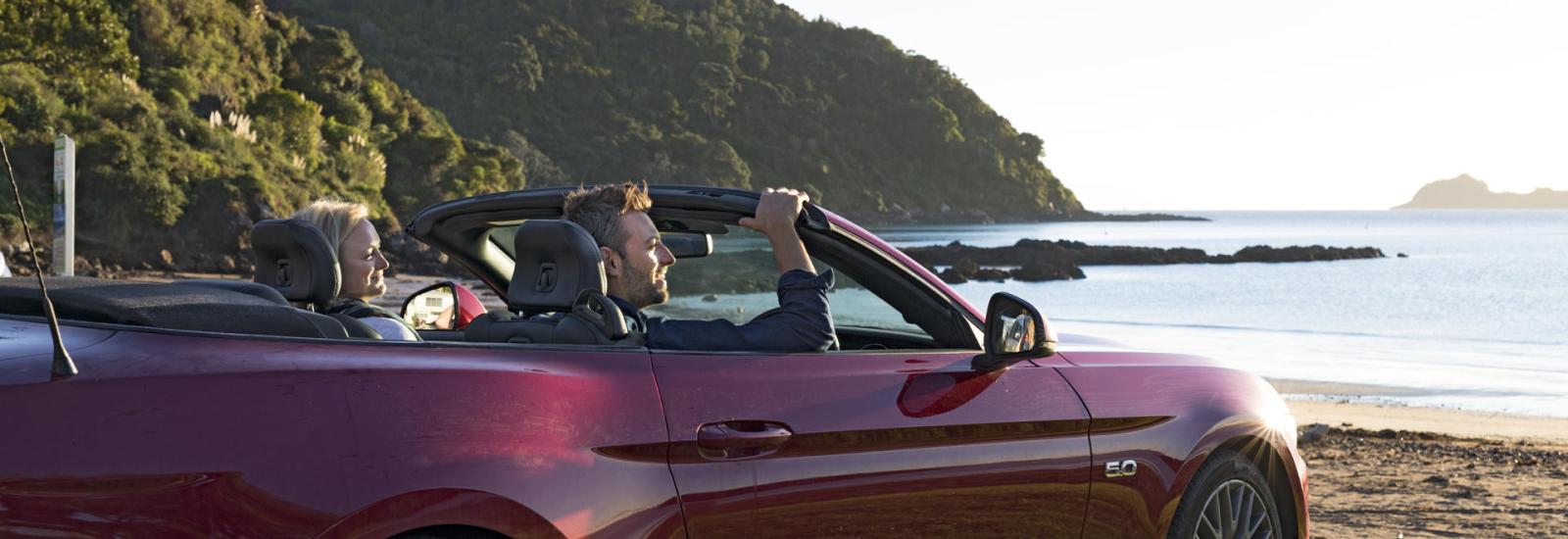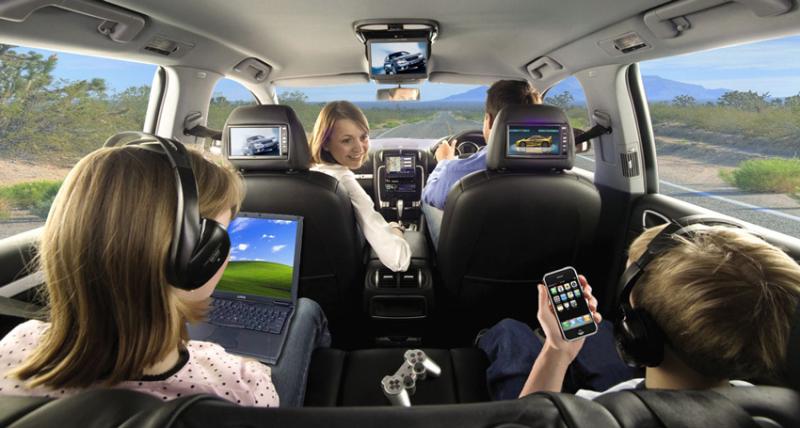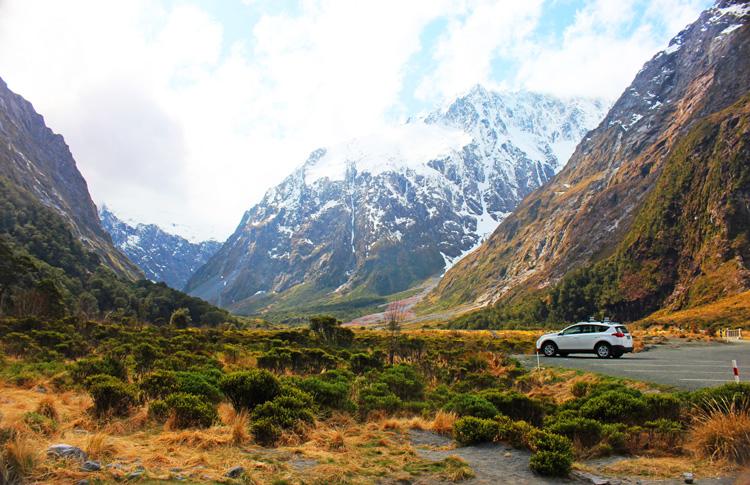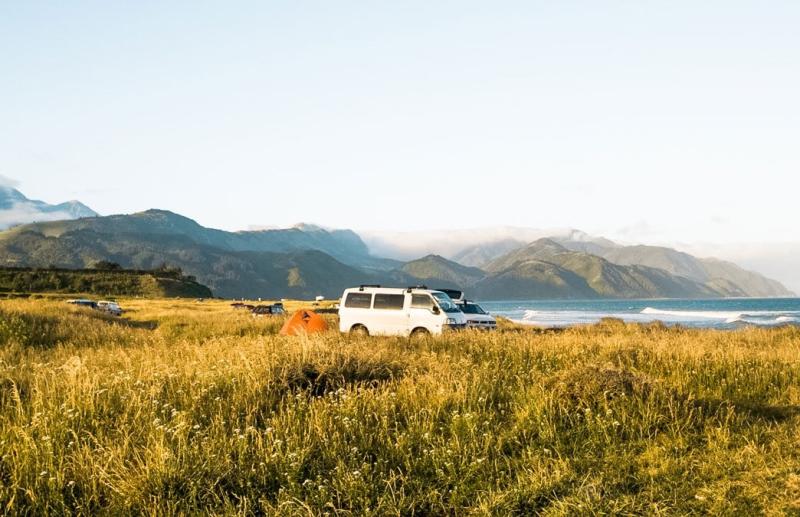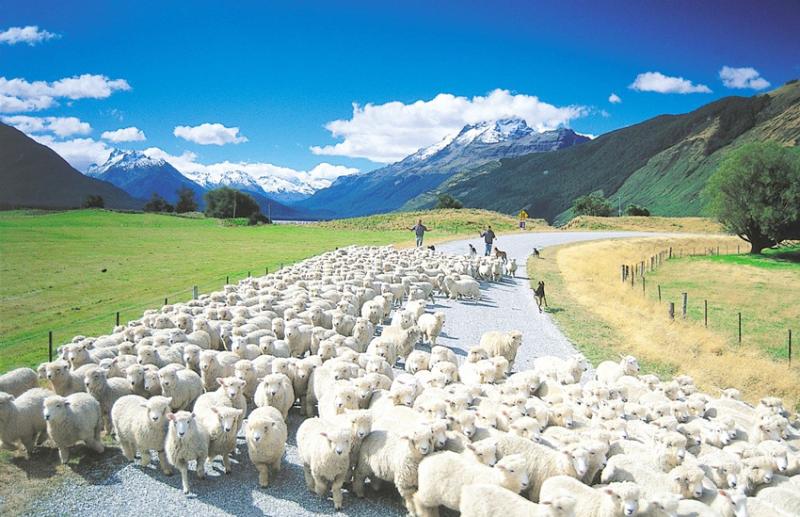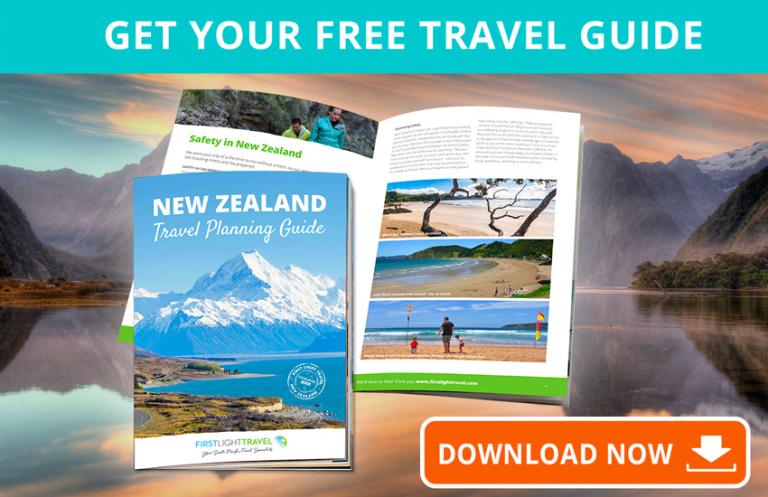Comfort is Safety!
Driving comfort is extremely important to remaining safe while on the road. When you consider the type of vehicle to hire, ask yourself whether you would feel comfortable when driving, does it have the necessary space and features for your specific journey - especially if it is a long one.
Driving long distances can be tiring and when you’re tired it can be dangerous, especially if you’re not used to driving on the left. There are few "interstate" highways (called motorways here) and the rest of the country is one lane each way. This is a hilly country and many roads, even major ones are narrow and winding and sometimes steep – taking these factors into consideration when planning your holiday, calculate an average speed of only 70 km (43 miles) an hour. If traveling a short distance, then you won’t need a vehicle that has tons of features, however if you’re traveling for many hours then we recommend having a vehicle that has conveniences/comforts like extra legroom, air conditioning and extra safety features like electronic stability control and extra airbags.
If you’re simply looking to save money on vehicle hire and petrol, you’ll probably want to hire the smallest available model, which is fine for those shorter trips, but size has definite safety implications when we talk about spending long hours driving. When in a crash with another car of differing size, it’s often whoever is the biggest is the safest, unfortunately this is true and statistically speaking most accidents are head on in New Zealand.
Features to Consider
| Safety | Comfort |
| Anti-lock Brakes | Sound System |
| Rear View Camera | Bluetooth |
| Blind Spot Warning | Sun/Moon Roof |
| Side Airbags | Seat Heaters |
| Cruise Control | Full Air Conditioning |
| Rear-view Camera | Power Outlet / USB |
| Electronic Stability | Rear Entry Trunk / Boot |
Family Touring
If you’re travelling with your family (children) or with a lot of luggage, you probably want to look at a larger sedan or SUV (sport utility vehicle). Having enough bottle and cup holders and flexible back seats to help kids relax when tired will make your journey as comfortable and enjoyable as possible. Consider a vehicle with an apple CarPlay display audio system. This is a safer, smarter way to use your iPhone while you drive. You can use google maps, enjoy your favorite music playlist and receive phone calls safely.
Does it have a child lock and is it flexible to all the kinds of car seats?
Size Matters
Enough trunk/boot space is a must: It is important a vehicle accommodates all essential luggage and also provides ample space to fit the luggage evenly and makes it easily accessible. SUV’s score highly as the trunk/boot is reachable from inside the vehicle and helps to avoid too many stops while driving.
Internal space management and features: When we talk about spending long hours driving, a car with comfortable and smart interiors acts as a perfect companion. Enough bottle and cup holders, flexible back seats, a good music system to entertain on long drives, comfortable seats with adjustable features while driving, minimal cabin noise are some of the essentials which are to be noted.
Cars are smaller in New Zealand as compared to the USA so be forewarned the trunks are smaller too! A good example of this is that a large NZ sedans will comfortably seat 4 adults but will not fit 4 large suitcases plus small bags into its trunk.
Vehicle Efficiency
Low Emission, Hybrid Cars & Electric Cars: The smaller the car the more fuel-efficient was the general rule. However there is now a line of cars in New Zealand that offer high fuel-efficiency and are easy on the wallet. We are now able to offer clean, low-emissions vehicles. All of the vehicles in this class offer guest’s significant fuel economy and lower emissions. This includes electric cars and hybrid cars. These vehicles are available at select locations with more coming online every month. The fleet includes compact cars, sedans and SUVs.
Fuel-efficiency is seen in New Zealand as reaching a combined miles per gallon (MPG) rating of 28. The combined MPG rating is calculated with a 45%/55% split using Highway and City measurements, respectively. For more on combined MPG visit fueleconomy.gov
Fuel efficiency: Smaller cars with smaller engines are more fuel-efficient, however some of the larger 4WD vehicles and people movers have efficient diesel engines. Diesel is significantly cheaper than petrol in New Zealand.
Automatic or Manual
The majority of New Zealand rental cars are automatic, some categories like compact or intermediate vehicles do offer a manual option, however this option is often more expensive. Most vehicle rental companies are phasing out all manual cars.
Navigation
Using a reliable form of navigation software is essential to your New Zealand travel experience. Using an app eliminates a big source of travel stress – getting lost and driving distractions when trying to navigate by road atlas or map.
Google Maps is web mapping platform that is widely used across New Zealand. It is reliable and free. Maps can even be downloaded to use offline before your journey, removing the need for internet connection. Signal on your smartphone can be limited in some of the more remote parts of the country, making this an essential feature.
As rental vehicle fleets are getting newer, more vehicles are now available with internal GPS systems such as apple CarPlay. Vehicle rental companies are phasing out the use of more traditional stand alone GPS units as technology is advancing and more reliable options are available.
Child Protection and Safety
Under New Zealand law, all children under 7 years of age must use an approved child seat/restraint appropriate for their age and size. It is the driver's (your) responsibility to ensure that any child that is travelling in the vehicle/car is correctly using an appropriate child restraint.
We have, rear-seat forward facing reversible child safety seats available at most of our locations and with advanced warning we can get them there.
These child safety seats can be used in two ways:
- Forward-facing for toddlers
- Reversed for babies
Child Booster Seats are suitable for children up to 3-7 years of age or children weighing 18-36 kgs (40-80 lbs).
Child Safety Seats are suitable for younger infants and toddlers age 0-6 that weigh 9-18 kgs (20-40 lbs) in a forward-facing configuration.
Child Safety Seats are suitable for younger infants and toddlers age 0-6 that weigh 2.2-9 kgs (5-20 lbs) in a rear-facing configuration.
The Fine Print
Insurance: All rental vehicles come with an insurance cover. There is a maximum excess or deduction which you are liable to pay in the event of an accident and these range between NZ$0 and NZ$500 depending on the rental vehicle company and the type of vehicle (value). These are clearly shown on your itinerary and quote from us.
Reducing your damage excess: Reducing your damage excess or deductible for rental cars is like paying insurance on anything in life – it’s about recognising the risk and protecting your-self accordingly. There are a number of damage excess options covering loss or damage to your hire car available.
Insurance exclusions: Insurance cover does have some exclusions. Damage to tyres and windscreens are not covered and all of these details are also specified.
Bond: In order to rent any vehicle in New Zealand a security bond is required to cover the excess or deductible is requested by the rental company on collection of the vehicle. This is usually in the form of a credit card authorisation.
Who can drive: There are few restrictions on who can drive the rental. There’s a minimum age of 21 years to rent a vehicle. Some companies apply a surcharge for those 21 to 24 years. Provided you have a licence, there is no maximum age for rental.
Traffic Violations: The renter is solely responsible for any traffic violations or parking tickets incurred during the rental period.
In Summary
Yes it’s a beautiful country and a road trip is a great way to experience our country but driving in New Zealand is nothing like driving in the USA. There are some obvious differences, like the steering wheel being on the right and the blinker (indicator) and windshield wipers are reversed.
But the real difference comes when you look at a map and say, "look it is only 80 km (50miles) between Thames and Whitianga, it should take us only 45 minutes to get there." Wrong! There are few "interstate" highways (called motorways here) and the rest of the country is one lane each way. That means slowing down to go through the numerous small towns, getting stuck behind logging or cattle trucks doing 60km (37miles) and other unforeseen delays that do not show-up on maps – So your choice of vehicle is essential, especially if you are going to spend a lot of time behind the wheel.


